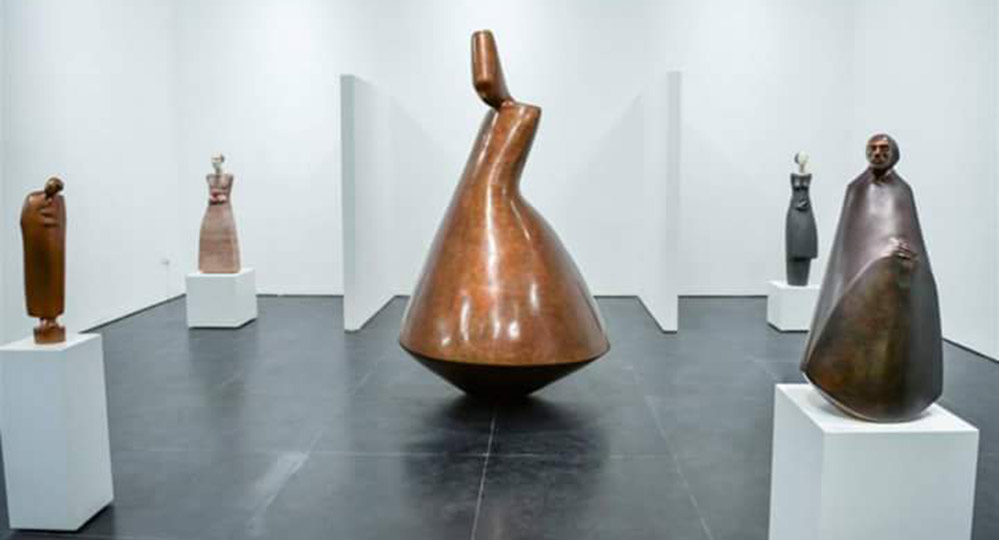In the wind of January

Into the wind they surrender these elongated bodies. They have round trunks for legs and subtly clasped hands within which they hold a precious stone or flowers as if it were an offering to an unknown force. They are the figures in Khaled Zaki's latest exhibition, In the Wind of January. The title refers to the January 2011, the month in which the Revolution in his native country of Egypt occurred, and later in June 2013, when the fighting took place again. Zaki's subjects, with their stoic expressions and resilient forms, echo the dreams of the Egyptian people for a better future. They stand tall and erect defending Egypt's history, dignity and determination to reconcile the past with the present.
Of continuous influence to Zaki's work is the culture of the Mediterranean. The first sculpture the artist saw was that of Ramses ll which at the time was located in the square of Ramses in Cairo in front of a railway station. He was five years old at the time and remembers the strong smile sculpted on Ramses' face. The young Zaki admired his large form and strength – elements which had preserved the 3,200- year-old figure through to the present day. Later, the artist marveled at the ancient works of art at the Museum of Egyptian Antiquities. Their figures were elegant and graceful and full of life even if their spirit lived silently within the stone from which they were carved. When Zaki moved to Italy, where he received the majority of his artistic training, he there found a similar energy in ancient Greek and Roman sculpture as well as classically- inspired forms of Renaissance master Michelangelo and Antonio Canova.
the works by these historical predecessors, his still feature human and animal subjects, many with plant- like and fantastical forms such as found in the works in this current exhibition. The development of these life-like elements was a direct result of the Egyptian Revolution. When it took place, Zaki felt that the abstract works that he had produced for more than eight years were not enough to express what he was feeling. Thus began his mergence of abstract and figurative form. After he watched the emotive faces in Tahrir Square he would go back to his studio and carve faces, feet and hands. Sometimes they are portrayed with worry, while at other times they are happy, proud and dreaming of the future.
Such are the sculptures in In the Wind of January. They firmly stand their ground before us- graciously rendered to depict their determination to bring about the change that only the unpredictable winds can bring. But there is much opportunism here through the resilient energy found within each Zaki's sculptural figures. Like the beautifully-rendered form of his Sufi, who continuously whirls around in circles before us in a physically active meditation, Zaki's sculptures are forms for contemplation. Locked within stone, these figures calmly reside before us as examples of calm during a moment of upheaval.
Rebecca Anne Proctor